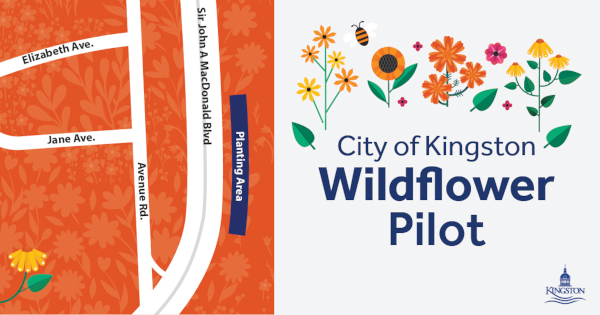Gardens & Horticulture
Gardens & Horticulture

It takes time and care to maintain and beautify our shared public spaces in Kingston. The City has a skilled horticultural team that oversees the planning, growing, planting and maintenance of more than 60,000 varieties of plants every year. When planning for an upcoming season, horticultural staff focus on colourful displays with low maintenance while also being mindful of native species and pollinators. New species are incorporated every year to promote fresh growth and displays.
Perennial garden beds, planters and hanging baskets can be seen in a number of areas such as:
- The downtown core in areas such as Princess St., King St., Brock St., and Springer Market Square
- Confederation Park
- Churchill Park
- McDonald Park
- Lion’s Civic Gardens
- Bath Rd. and Princess St. medians
- Other grass medians
- Signage at entrances to Kingston (Highway 401)
City Greenhouse
Experience the City’s greenhouse virtually!
You can now experience the greenhouse from the comfort of your home. Watch the video below to see the spring bulbs and tropical plants on display, learn more about the history of the greenhouse, and the work that our skilled horticulturalists do to prepare for planting season.
Wildflower Pilot
The City is currently piloting the potential for roadside wildflowers along the side of Sir John A. Macdonald Boulevard between Princess Street and Glengarry Road. City staff have seeded a salt tolerant perennial mix that includes native wildflowers and grasses. These areas will be monitored for growth and, if needed, will be reseeded in isolated sections.

To support the growth, this area will not be cut or mowed. It may take a while to see the wildflowers, which are expected to mature and bloom in the second and third years of growth.
Wildflowers are an important part of our naturalized areas. They can support native vegetation and pollination, as well as creating a habitat for wildlife. When placed along roadsides, wildflowers help beautify the area and support endangered species of pollinators including bees and butterflies.
Gardening Tips
- Soil preparation – soil should be moist to support important nutrients to plants. Peat moss, compost or manure can be mixed in the top 30 cm of the soil for added benefit.
- Plant selection – when selecting plants, be mindful of any watering and sun or shade requirements. Choose plants that resist drought to lessen the amount you need to water. Use grass as a backdrop and in areas that are well-traveled. Understanding effective watering techniques is important to properly irrigate different plant varieties.
- Plant – dig a hole as directed for the plant species. Compost can help and should be added to the bottom of the hole. Center the plant and water. Ensure roots are covered for adequate moisture at the time of planting. Cover the plant with soil, water and create a ring around the plant.
- Mulch – adds a variety of benefits including controlling erosion, retaining moisture, suppressing weeds, regulating soil temperature, and reducing the risk of disease. Bark, wood chips, compost, grass clippings and crushed river rock can all be used as mulch material. Mulch should be around 10 cm deep.
- Irrigation – the use of soaker hoses or a drip irrigation work well for watering. Consider the amount of rainfall forecasted before watering. Leave a measuring container out in the garden to help assess how much rain falls each week. Avoid watering in the afternoon or on windy days when water can be wasted due to evaporation. Collect rainwater in a barrel for garden use. Visit Utilities Kingston’s website to learn how you can be water-wise.
